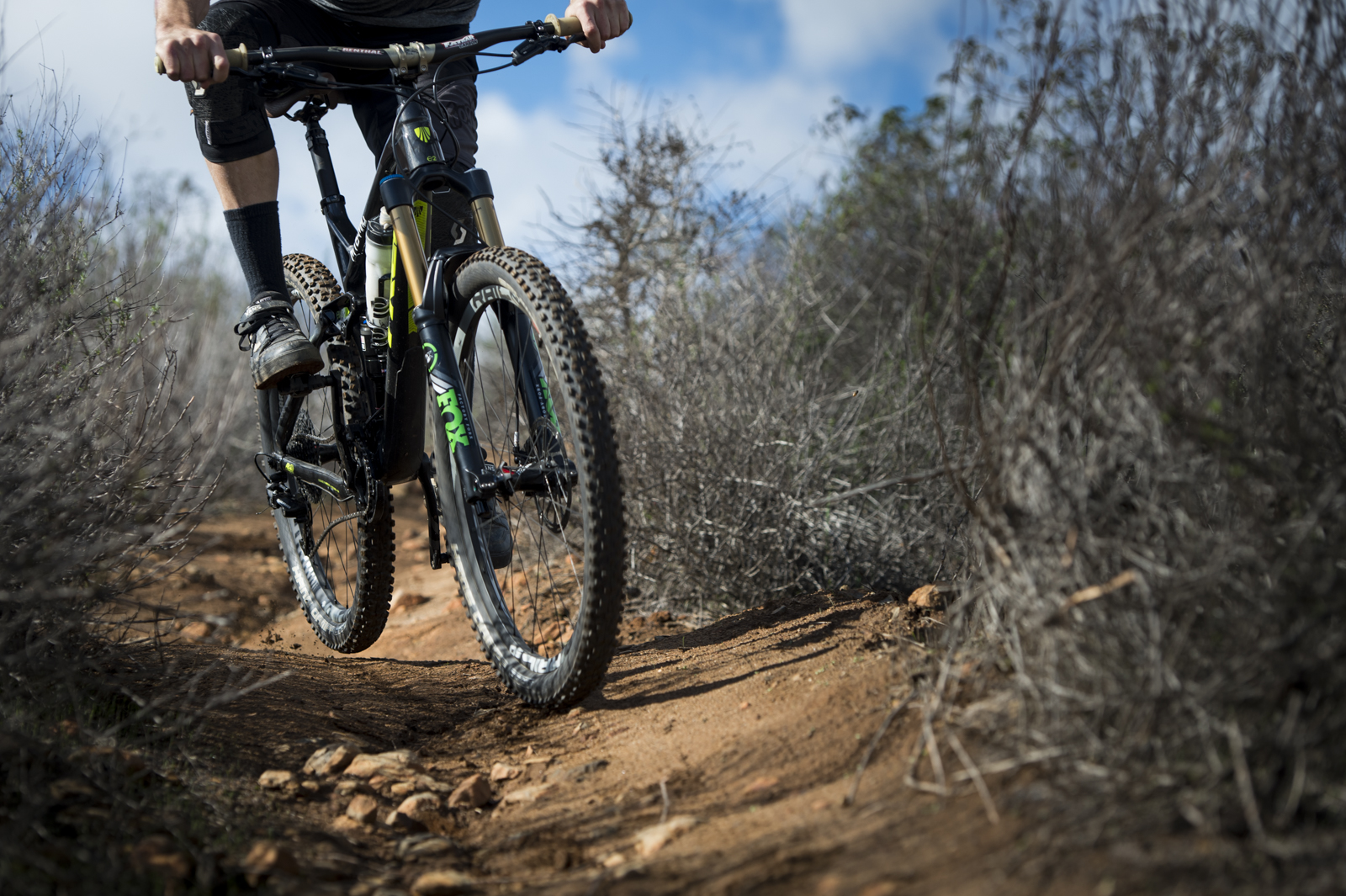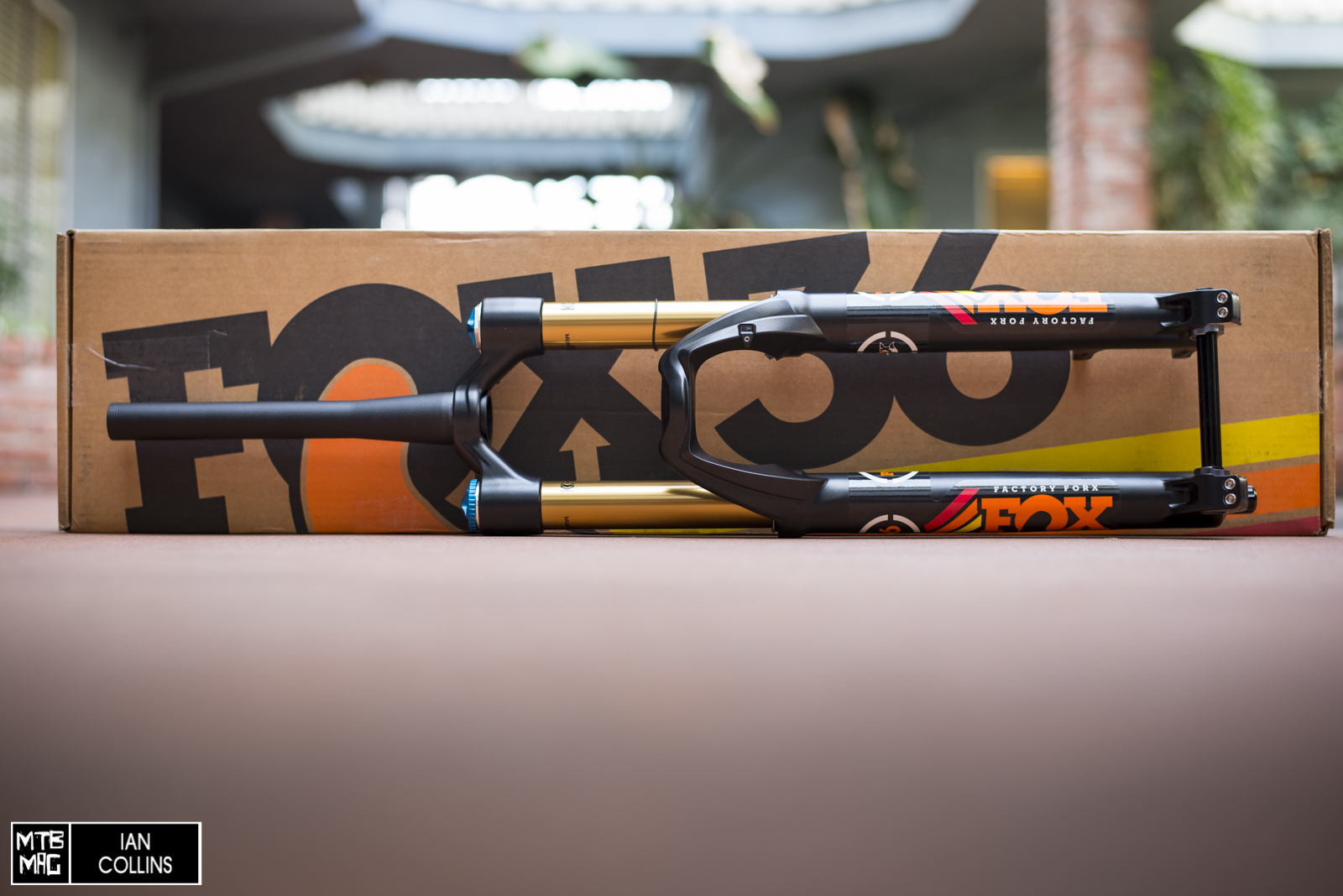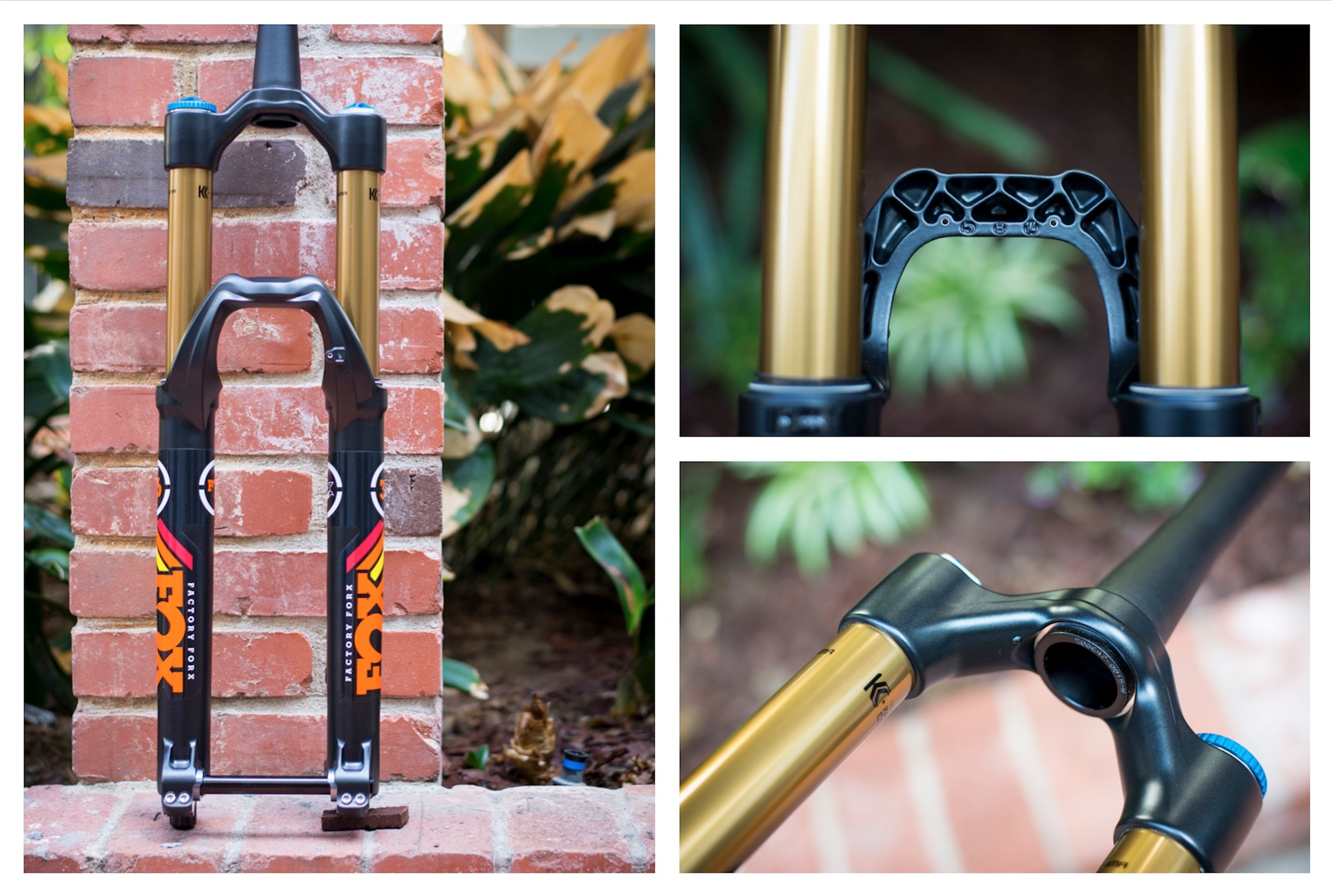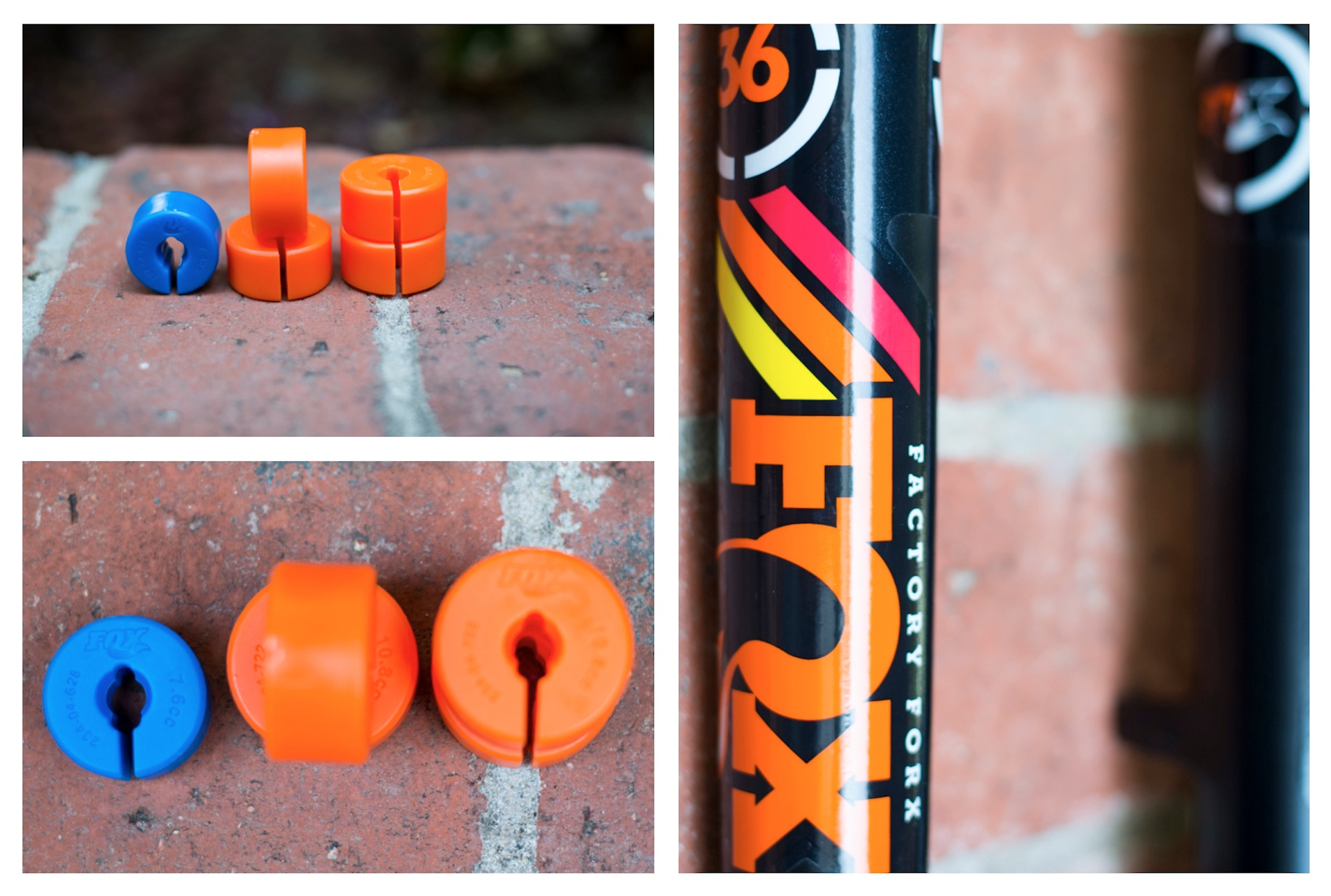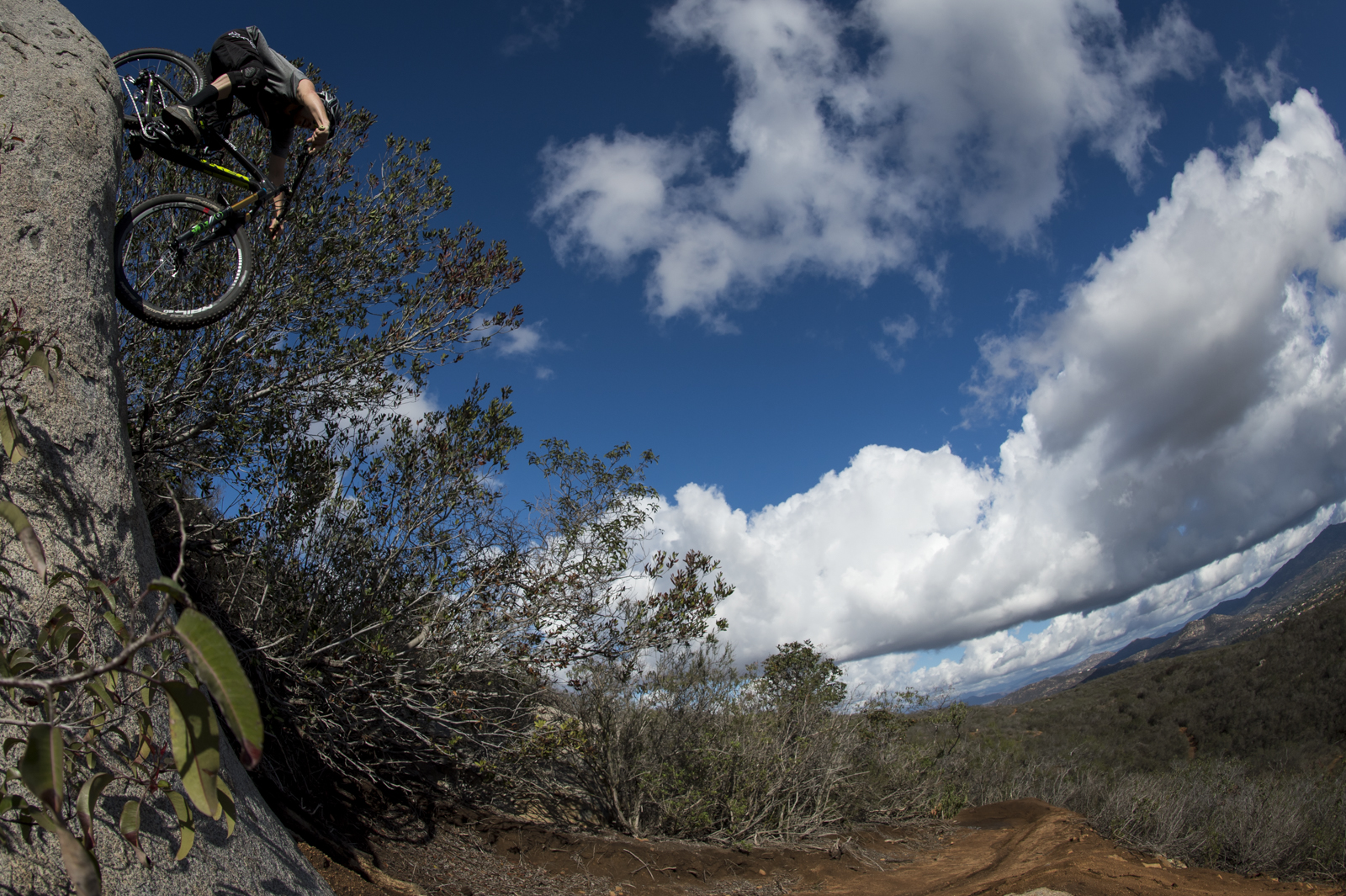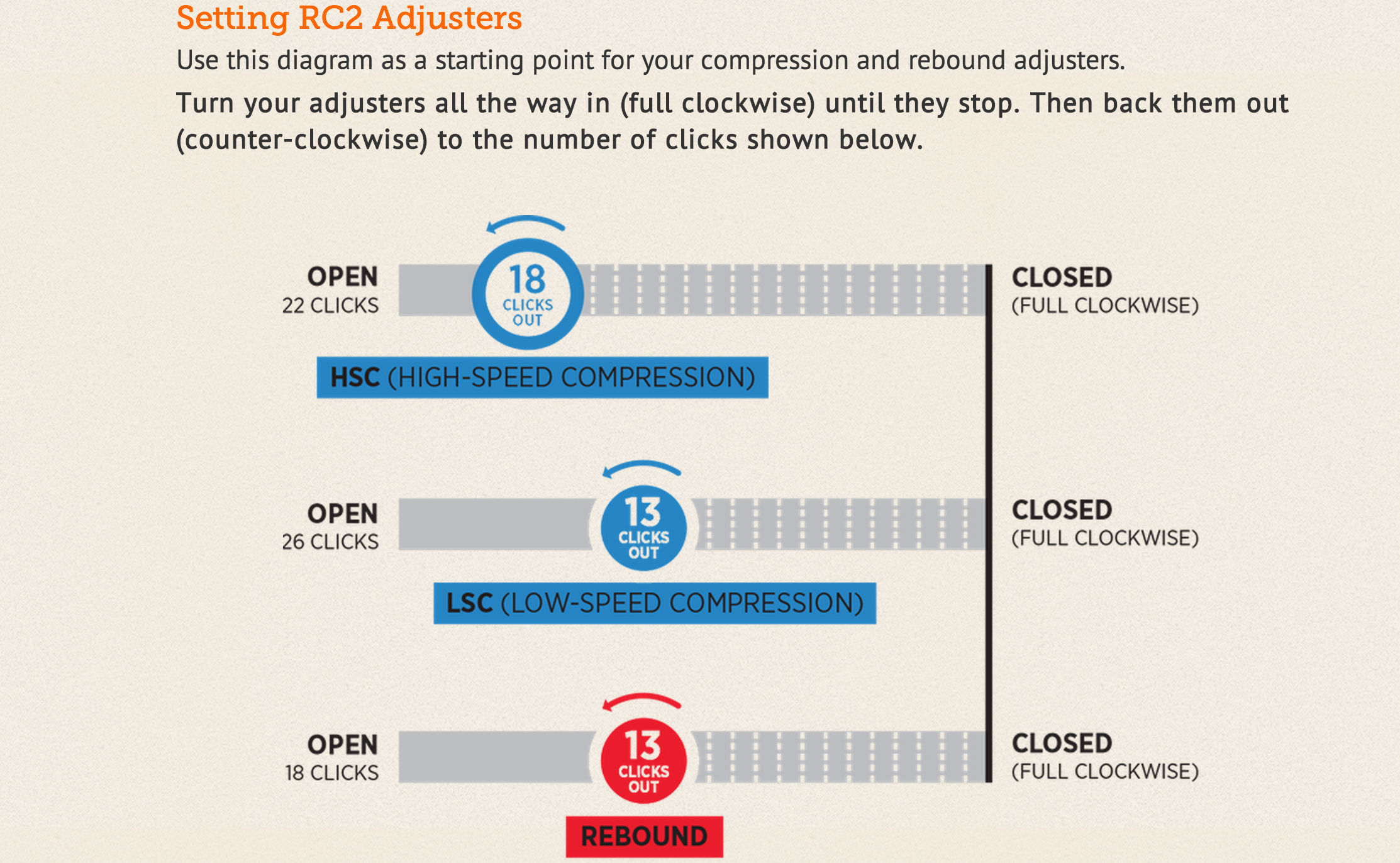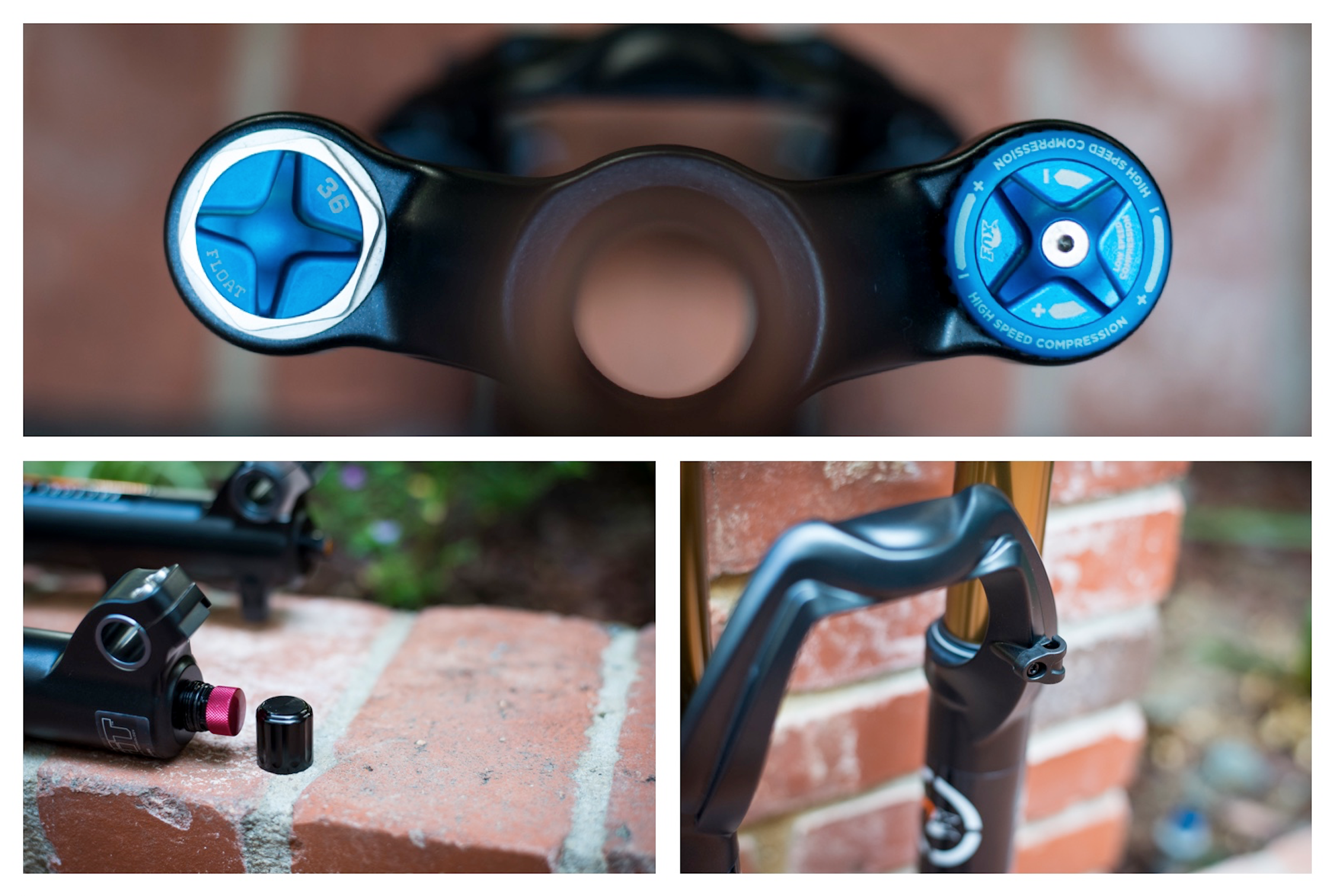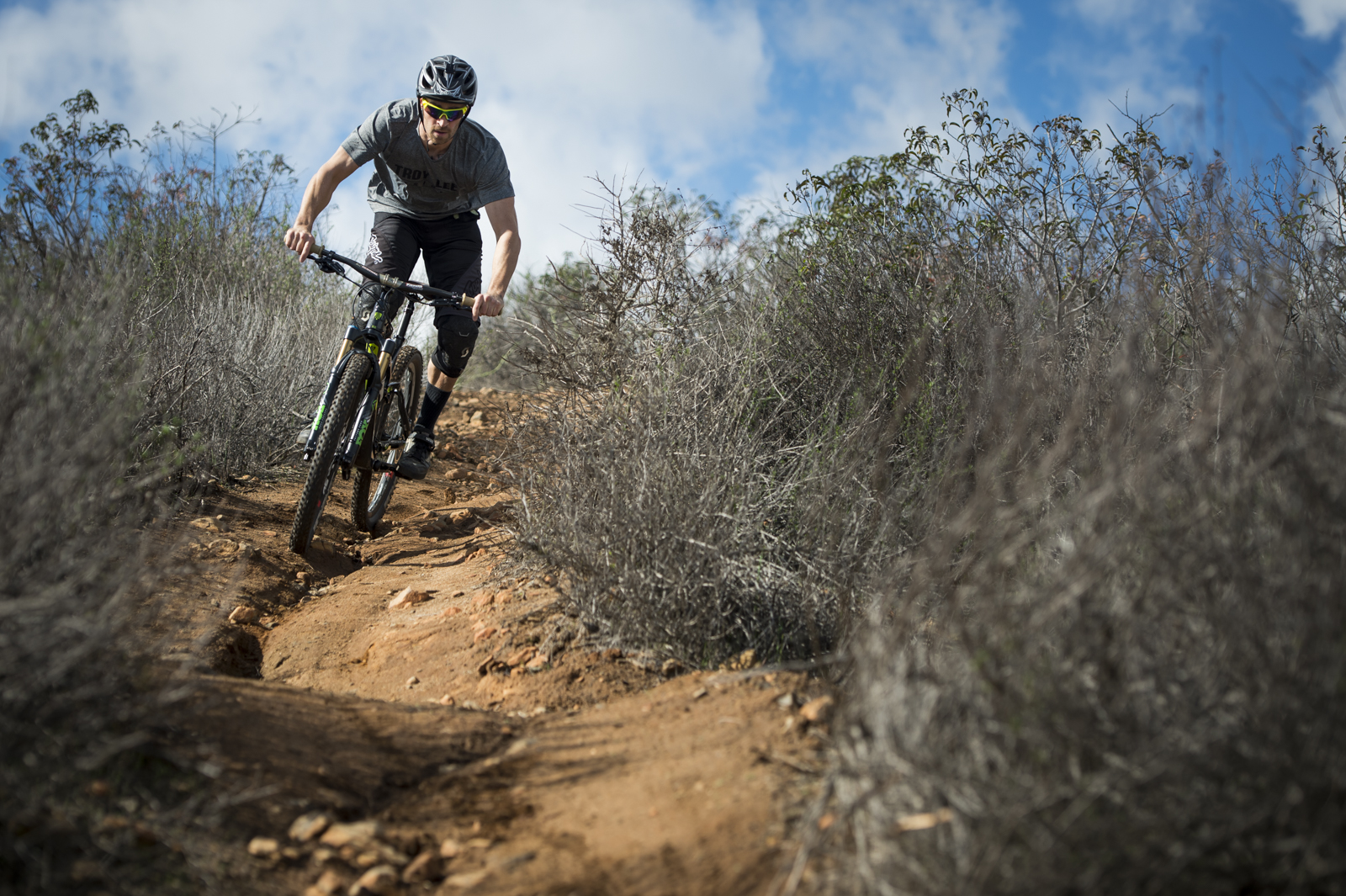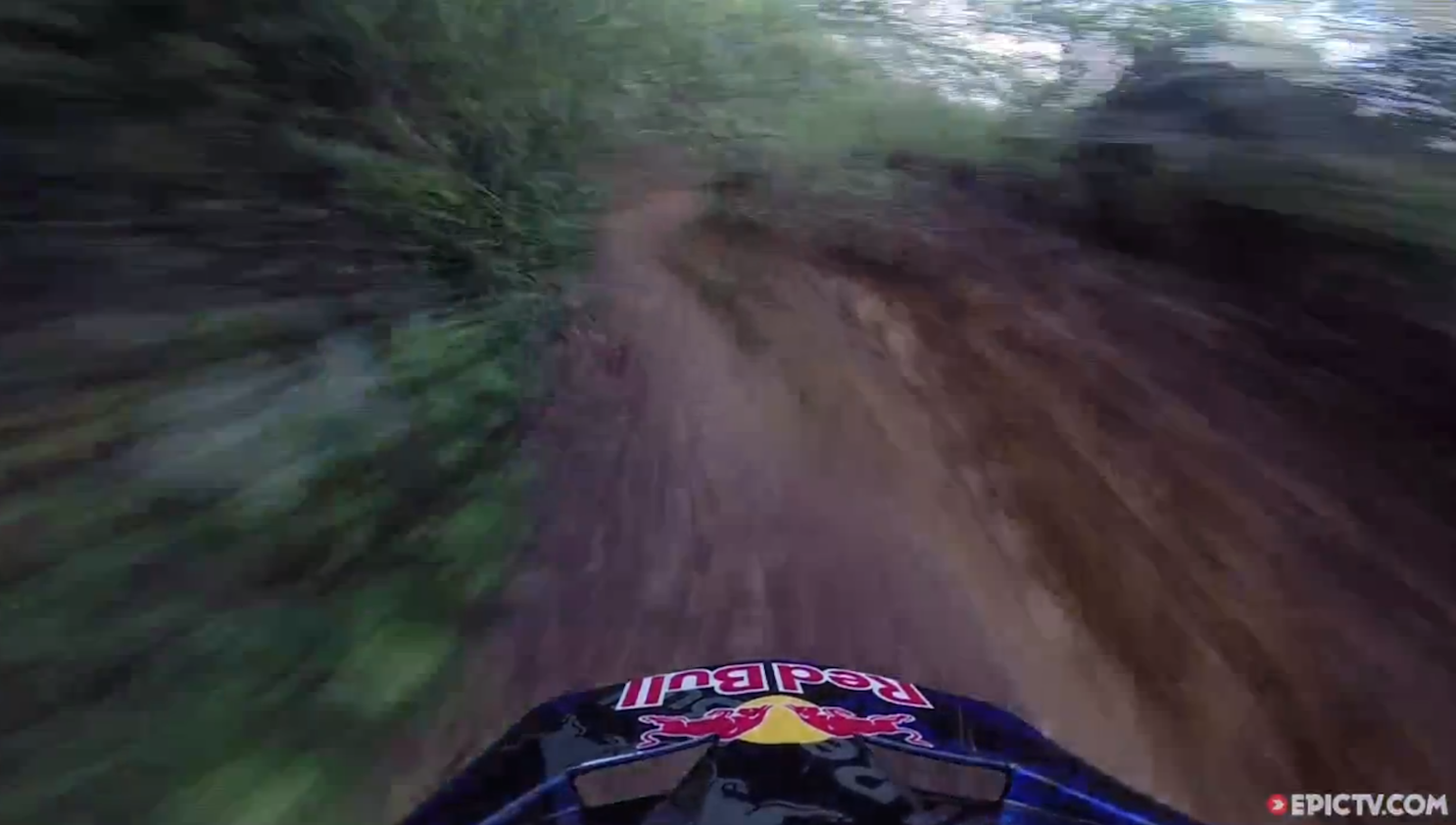Less than a year ago, in the 27.5″ enduro market there wasn’t exactly a plethora of choices for consumers when it came to front suspension. Aside from the Pike, the rest of the market hadn’t exactly caught up. Enter the Fox Float 36. Boasting a beefier chassis than any other offerings in its category, it utilizes 36mm stanchions and a lightweight chassis which received a host of refinements to get the weight down. Aside from an updated damping system, one of the most notable features is the reworked air spring. Fox now takes advantage of a system which uses volume reducers to fine tune the rate of progression as well.
Before we delve into the meat of the review, it’s important we mention that Fox offers the Float 36 in 26″, 27.5″ and 29″ in 10mm travel increments from 130mm to 180mm. The fork is also available in 1 1/8th or tapered steerer tube offerings with either 15mm or 20mm axles via a nifty adapter Fox has designed. You can also choose between the Float damper or a TALAS damper with a 30mm adjustment. With TALAS, even those 30 millimeters can be fine-tuned in 5mm increments with travel chips. While all of that may be a lot to take in and it is refreshing that Fox have literally dozens of options, we opted for the 160mm/27.5 version on our Trek Slash.
Out of the box
Straight away, when you pull the Float 36 out of its box, you’ll start to take in just how burly it truly is. While there are forks in this category which are slightly lighter, this one feel quite scant given its fortitude. As you begin twisting knobs and dials, you’ll appreciate things like the laser etched compression adjusters and the cleverly protected rebound knob. The adjustments are effortless, but their detents’ presence is felt despite being relatively silent in nature. Kashima has proven to be an incredibly low friction, and durable coating over the years. The lowers are stout, but have plenty of relief to keep the weight down.
Chassis
As mentioned before, the Float 36 is not skimpy, and at 1960 grams for the fork we tested(with cut steerer), it’s pretty darn light. For the new chassis, Fox decided to build the castings around a 20mm front axle. While we all get sick of different sized axles and think it’s silly to go from 20mm to 15mm, and then back to 20mm – there was plenty of planning on Fox’s end. First off, the fork comes with both 15mm and 20mm axles, and some nifty adapters to size down. Why did Fox opt for a 20mm axle? While we haven’t gotten an official answer from them, it’s likely because that’s what high level enduro racers are asking for. As the EWS rounds get gnarlier and gnarlier, some of the sections found on the tracks aren’t vastly different from parts found in a world cup DH track. A larger axle is certainly advantageous when things get rowdy. This does come at a slight inconvenience at times. Because the adapter is required, there isn’t really a way to engineer a system like this without utilizing pinch bolts, so you won’t find a quick release here. Thus, removing and reinstalling the front wheel is a bit of a pain. This doesn’t dampen the on trail performance of the fork whatsoever – in fact, it likely improves it and saves a bit of weight in the process. Suffice to say, it’s a tradeoff, but when you’re changing a flat tire in the middle of nowhere, having to tighten and loosen 4 pinch bolts and an axle with an allen key just adds insult to injury.
The Float 36 utilizes a really buff crown which houses a tapered steerer that’s pressed in via a proprietary method. We visited the Fox factory in Watsonville, CA a few months back and they were a bit cryptic and secretive about how this bonding is actually done, but ensured us that they’re the only one doing it. Moving down, the Kashima coated 36mm stanchions proved to be slick and tough. Throughout our test, the seals and bushings ran smooth and stiction free despite making a point to get out in muddy conditions as much as possible. All in all, the platform this fork is built around is second to none. What’s inside of it makes it unique.
Pictured above, we opted to snag a set of the Heritage Decals to better suit the graphics of our Trek Slash 9.8 test mule.
Spring
With the new Float forks, Fox overhauled the air spring completely and did a killer job. First off, the spring itself lost nearly 100 grams. One of the most notable features is the off the top feel. This fork has blurred the lines between the feel of air and coil springs. Its action feels so smooth and free of stiction that it’s virtually impossible to tell that its air sprung. This is largely in part due to the automatically equalizing positive and negative chambers but credit is also due to an improved seal head.
The part we’re most psyched on is the volume reducers. We started off with no reducers, and as expected the fork had a really linear feel. This could be advantageous in some stages in racing scenarios with a great deal of mid sized hits and rocky sections. We opted for a bit more progression and worked our way up to 2 of the larger 10.8cc orange volume reducers before we found the perfect rate. Fox definitely deserves a tip of the hat for having a really thorough setup section on their website. It made it a breeze to experiment with different settings on the fork. Anyhow, with two orange reducers, our 180lb test rider found the fork to be super light off the top, snappy and punchy in the turns and never feeling wallowy. On the mid sized stuff it opened up nicely and while we still got full travel, it resisted bottoming nicely. Changing the reducers is a breeze, being obsessed with setup, we found it to be quite fun to dabble with different rates.
Damping
This is where despite being a bit opinionated and fighting the urge to set up damping the way we think it feels right we opt to just start with the recommended settings – especially when running a proper test. Again, Fox has done an excellent job here. The chart below outlines the baseline starting point that most riders should begin with. We did exactly that, and unlike most products we’ve tested, we didn’t really stray very far from those settings.
Early on, we found ourselves packing on a few extra clicks of compression(mostly low speed) to try to help keep the fork up in the travel and prevent it from wallowing and diving. Then, as we started to experiment with the volume reducers a bit, we ended right back to their recommended settings plus just one or two clicks of low speed. OK, so Fox hit the nail on the head with the settings…how did the damping actually feel on the trail? All in all, it felt exactly as it should. Traction remained incredible on high frequency chatter and subtle bumps such as small roots. We never felt the initial harshness that’s all to synonymous with air sprung forks. Successive mid size hits didn’t ever ball the fork up, and heavy jarring hits were all handled perfectly.
We’re really happy Fox doesn’t utilize CTD on the Float 36. Featuring a new seal head design which reduces breakaway force and an updated damping tune, the updated Fit RC2 is a massive improvement over the old Fit system. One minor gripe worth addressing is that this fork doesn’t feature any sort of lockout. While this may bother some, it was hardly a hindrance for us. Keep in mind that it’s largely due to personal preference. Our tester generally doesn’t use a lockout, and felt that the spring rate and damping was controlled well enough that the fork didn’t really move excessively anyway. Anyone who could get hung up on that should simply consider the TALAS version of the fork, or perhaps the new 34 with CTD. Aside from that, the damping side of things is pretty much flawless all around.
Stiffness (handling)
When it comes to handling, we felt the Float 36 is in a league of its own. We’ve ridden most of the other forks in this category, and while many of them are solid contenders, none of them are as confidence inspiring when things get steep, fast and rowdy. The steering precision and handling that the Float 36 provides makes it an incontestable class leader. This is the first enduro/heavy duty trail fork that we’ve ridden which made us feel like we could charge into just about anything knowing full well that it won’t flinch. There isn’t really much else to say about the handling – it’s superb.
Overall
In summary, the best way to describe the Float 36 is that it feels like a scaled down DH fork. It feels like a racing fork through and through. To elaborate on that, when you push it super hard, it doesn’t hesitate one bit. The spring rate can be perfectly tuned to suit any rider on any track in any condition – so can the compression damping. Where most enduro front ends can be a bit limited, the Float 36 has fully tunable high and low speed adjustments. In our opinion, the burly chassis and controlled action of the damping makes most of the competition feel a bit sub par.
Is this the right fork for you? That depends. Our two small complaints regarding the lack of a lockout and the pinch bolt style drop outs might deter a very small number of riders who are hung up on convenience. However – if you’re more concerned with all out performance on the trail, the rock solid chassis and more refined suspension will suit you well. While the Float 36 will perform incredibly for riders of any stature and skill level, it’s worth emphasizing that heavier and/or more aggressive riders will certainly find this to be a breath of fresh air compared to the other offerings on the market…especially if their bias is pointed downhill.
Weight:
4.32 lbs / 1960 Grams
Travel:
6.3 inches / 160 mm
Steerer:
1.5″ taper aluminum
Intended Usage:
Trail, All-mountain, Freeride
Adjustments:
Rebound
Low-speed compression
High-speed compression
*15mm or 20mm axle
$1,050 USD
Product Photos : Ian Collins
Action Photos : Matt Puzel


